Today is the day I celebrate every year as Warbler Day. Up here in Duluth, warbler migration is just kicking in, but in other places I’ve lived—Chicago; Lansing, Michigan; Madison, Wisconsin; and Ithaca, New York—warbler migration usually is peaking right about now.
I selected May 11 as Warbler Day because that’s the day I identified my first warblers ever, in 1975. I lucked into the middle of a big migratory flock of them. Most warblers are territorial enough by spring migration to get agitated hearing others of their species singing, so a flock of, say, 7 individuals is likely to have 6 or 7 species rather than several of a single species.
Sure enough, that one flock gave me a veritable rainbow of warblers: Black-and-white, Nashville, Magnolia, and Black-throated Green.
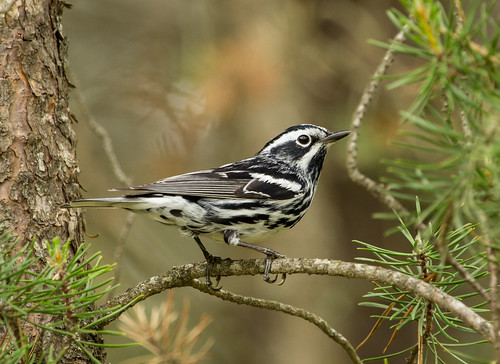
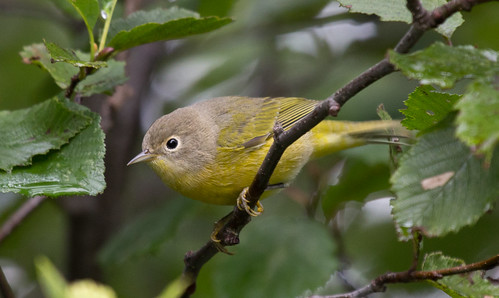
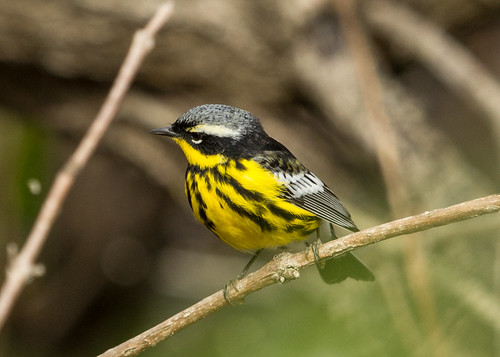
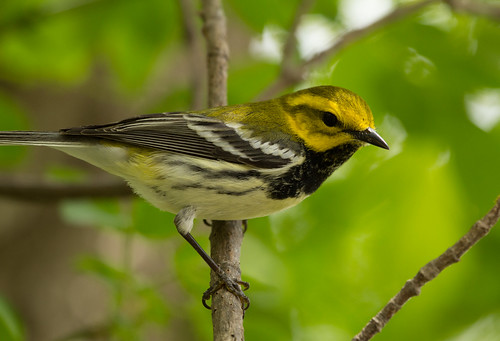
In retrospect, that flock also definitely had a Canada Warbler—I was trying desperately to see all the important field marks of each one, but going back and forth between the bird and my field guide was tricky because the birds were so actively flitting this way and that. I saw one that was brilliant yellow with shiny black streaking beneath, with a bluish gray back with no wing bars. I looked down in my book and found Canada Warbler, but when I looked up at the bird again, the one where it had been also had a brilliant yellow underside with shiny black streaking, but it now had large, thick white wing bars. It cooperated long enough for me to confirm it was a Magnolia, but the one I first saw there had to be a Canada Warbler even if I didn’t see it long enough to confirm it for my life list.
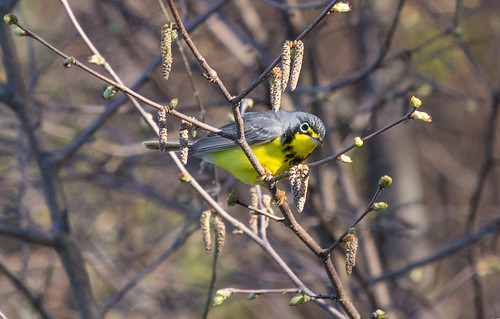
I’m sure there were several other species in the flock as well, but needed more time to study each one than the active little birds gave me.
Two days later I added another warbler to my lifelist—the Blackburnian.
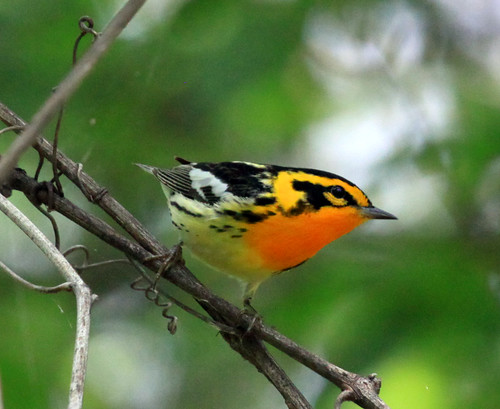
Those were the only warblers I was able to identify that spring—I was just starting out, still new at getting birds into my binoculars and tracking them, and trying to fix all the critical features of each bird while I could hold it in view. I clearly remember how frustrating warblers were for me, but also the thrill when I kept one in view long enough to work through what it was. By the next spring, I was much better, and my warbler list grew to over 20 species.
The warblers I saw in 1975 may be the first ones I ever identified, but they aren’t the first ones I ever saw, though I didn’t realize it at the time, because I happened to be a preschooler. It was probably May 1957 when I saw a flock of brilliantly colored, tiny birds in the maple tree out my upstairs bedroom window in Northlake, Illinois. My mother said they must be canaries, but they were ever so much more intensely colored, and so much more active, than the only canaries I’d ever seen—my Grandpa’s beloved pets.
My Grandpa had told me how canaries saved the lives of miners by warning them about poisonous gases—but those heroic little birds actually had to die to save them. So my preschool brain reasoned that these brilliant little birds outside my window must be the angels of canaries that had died saving miners’ lives. When I became a birder and realized those angel birds had been warblers, my childhood fancy made the warbler family even lovelier and more precious to me.

Warblers are challenging puzzles, beautiful spirits, and wonderfully characteristic of our north woods. Of course, the dark side of enjoying them on their breeding grounds is the ever present cloud of mosquitoes. Mosquitoes bite warblers as voraciously as they bite us humans, but in turn the warblers get quite a bit of protein by gobbling up mosquitoes, inadvertently consuming any human blood those mosquitoes may have sucked up.
It’s cool to look at warblers rushing through and wonder which might have a tiny speck of protein in their bodies that came from my own blood. It’s satisfying to realize that I am unwittingly supplying at least a trace of nourishment to these luscious little birds that so deeply nourish my soul.
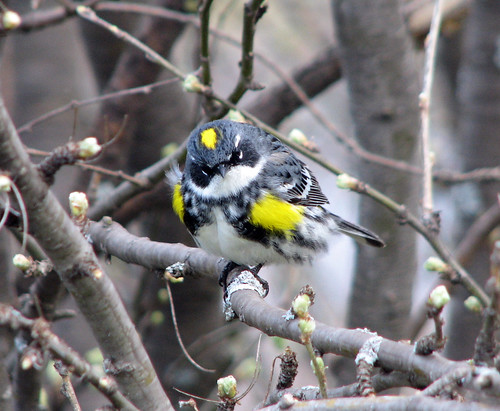
Laura Erickson
Laura Erickson, 2014 recipient of the American Birding Association’s prestigious Roger Tory Peterson Award, has been a scientist, teacher, writer, wildlife rehabilitator, professional blogger, public speaker, photographer, American Robin and Whooping Crane Expert for the popular Journey North educational website, and Science Editor at the Cornell Lab of Ornithology. She’s written eight books about birds, including the best-selling Into the Nest: Intimate Views of the Courting, Parenting, and Family Lives of Familiar Birds (co-authored by photographer Marie Read); the National Outdoor Book Award winning Sharing the Wonder of Birds with Kids; 101 Ways to Help Birds; The Bird Watching Answer Book for the Cornell Lab of Ornithology; and the National Geographic Pocket Guide to Birds of North America. She’s currently a columnist and contributing editor for BirdWatching magazine, and is writing a field guide to the birds of Minnesota for the American Birding Association. Since 1986 she has been producing the long-running “For the Birds” radio program for many public radio stations; the program is podcast on iTunes. She lives in Duluth, Minnesota, with her husband, mother-in-law, licensed education Eastern Screech-Owl Archimedes, two indoor cats, and her little birding dog Pip.
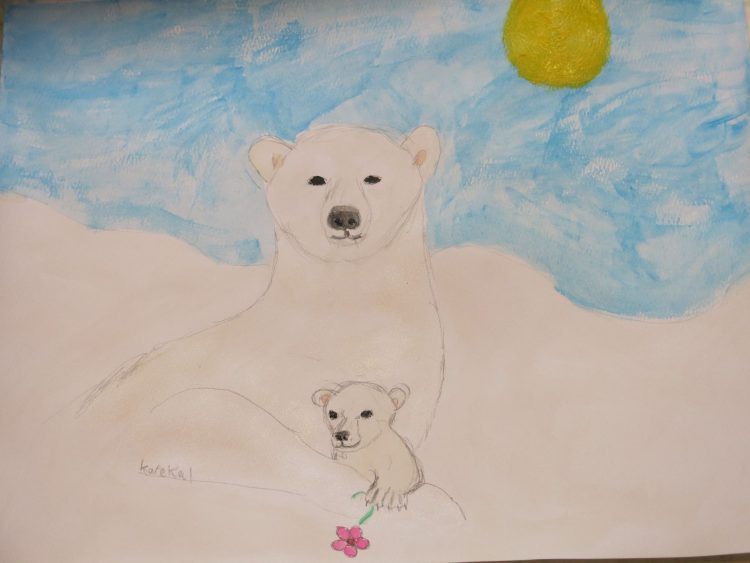
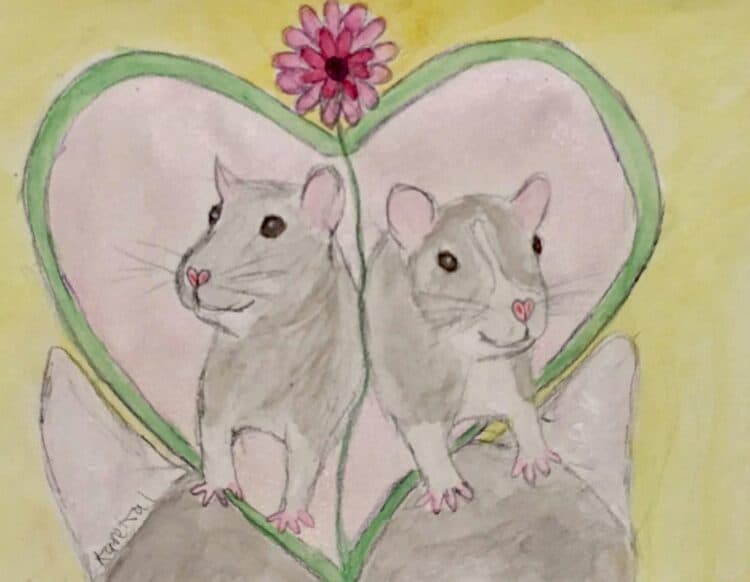
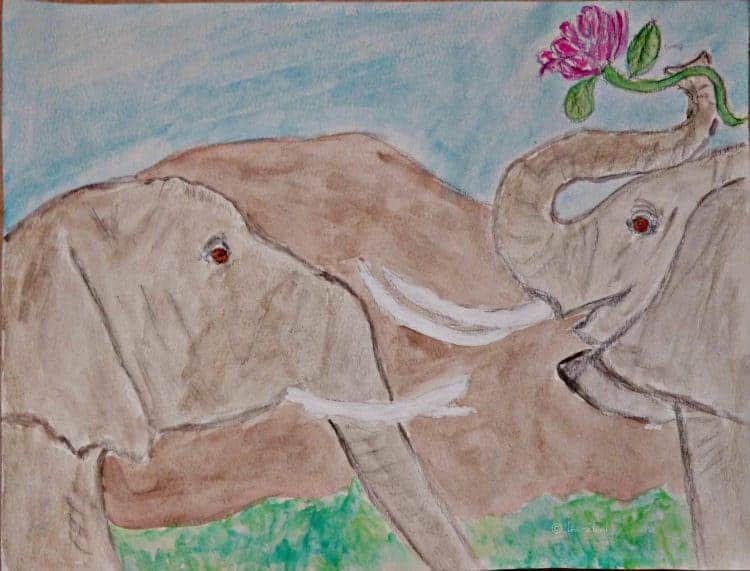
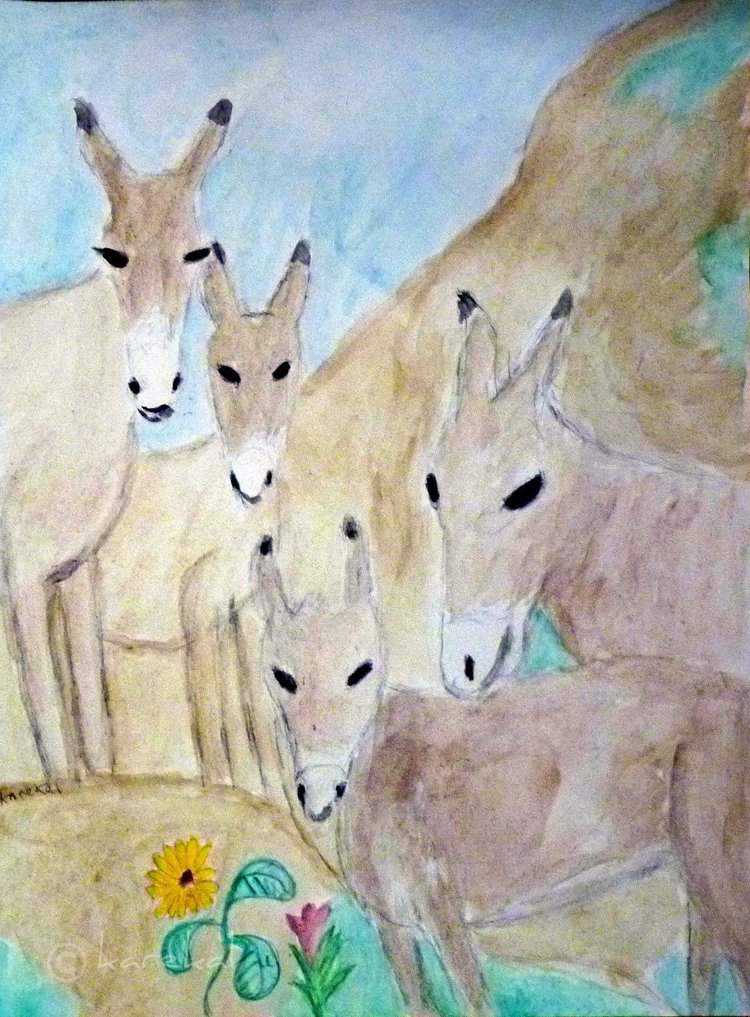
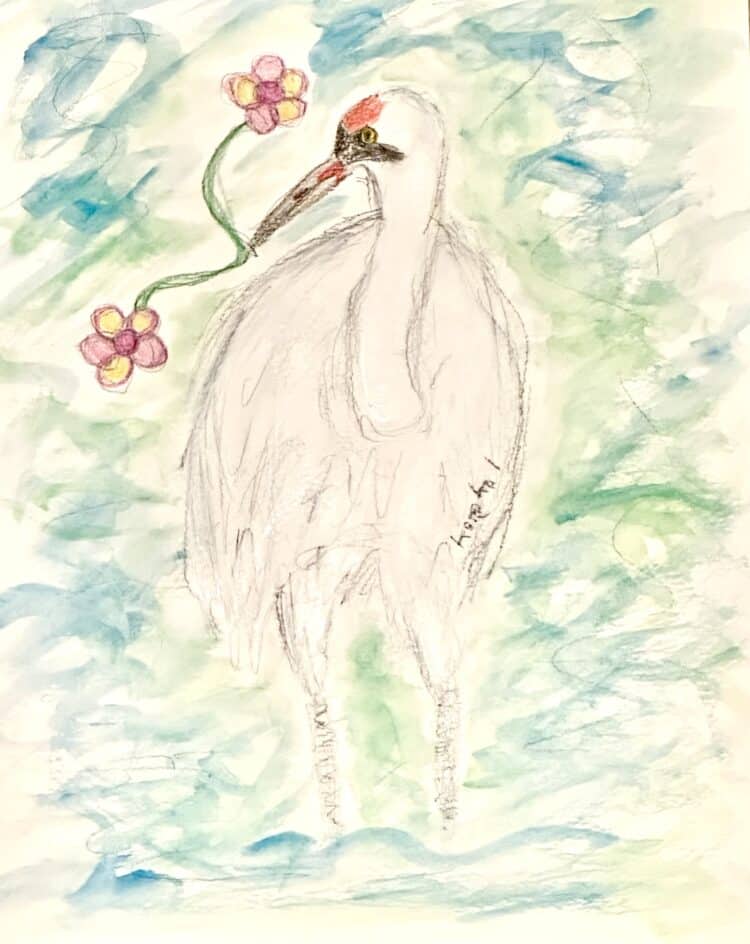
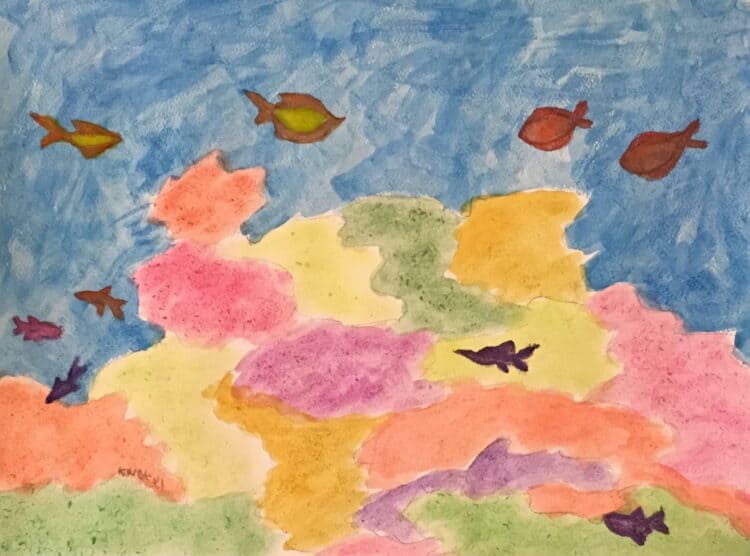
Leave a Reply